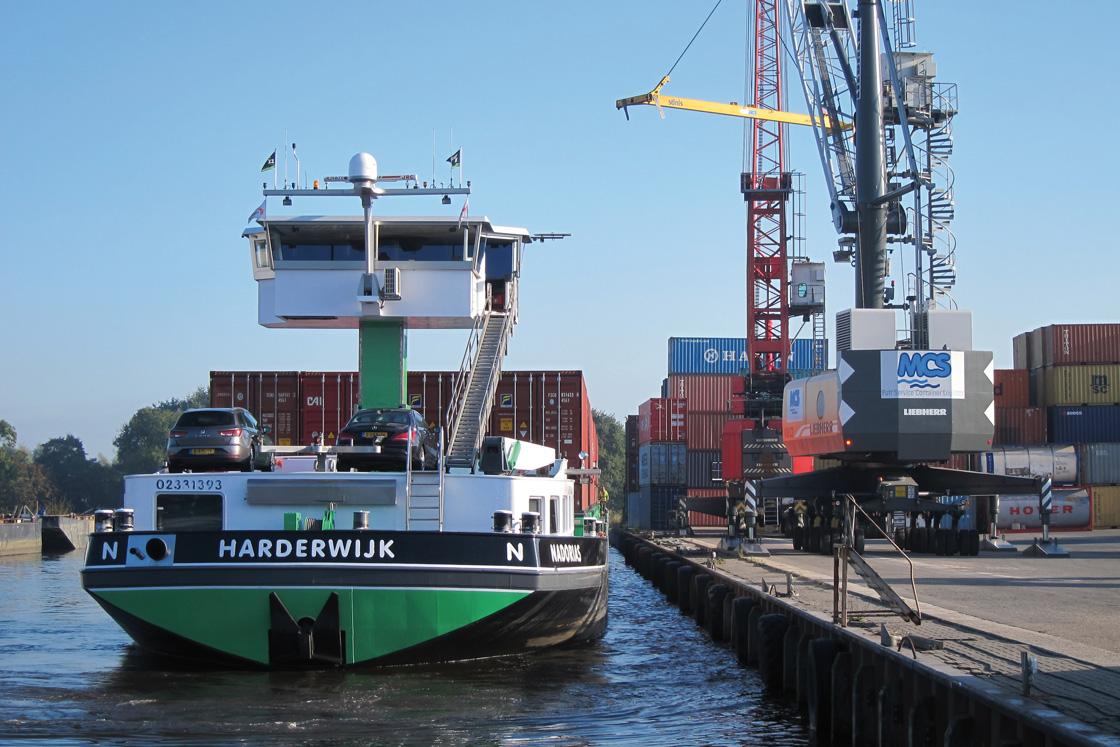
On board the MS Nadorias, the huge potential in converting to hybrid is no longer a vision but a reality. A hybrid retrofit has given this inland container carrier a huge 15% saving not only in fuel, but also in CO2 emission. Since the main diesel engine now runs much less, there is 60% less maintenance cost and higher uptime than for its identical sister ship.
For five years the MS Nadorias serviced the inland waterways of the Netherlands, powered by single diesel engine with a conventional direct drive to a single propeller. However an analysis showed that for 60% of the time the ship only needed a fraction of the full engine power. There was a big potential for fuel savings by converting to a diesel electric hybrid propulsion system with 2 smaller generators – and this potential has now been realized.
The brothers Dominic and Sebastiaan van der Meer and their business partner Edwin Groen who own the company together are very satisfied with the new propulsion system:
“We save more than 15% on fuel due to the hybrid propulsion system. The ship is travelling on the same route before and after the conversion and we have been able to compare the fuel consumption over a long period. The ship runs 98% of the time in electric mode and the crew has become very skilled in operating the ship in economy mode without the need for “full throttle”.
As another positive side effect, the ship is extremely quiet, because the two generators are located far away from the bridge and accommodation area. We went from a noise level of 60 dBA in the wheelhouse to just 42 dBA, which is really quiet.”
Compact solution
The retrofit had its challenges however. One of the main hurdles was finding space in the engine room.
Koedood Dieselservice BV and Hybrid Ship Propulsion BV (HSP) performed the retrofitting project. They solved the space problem by replacing the original main engine with a new compact system comprising new engine and a high torque shaft motor. The two new generators were placed in the bow of the ship and the electrical power was fed back to engine room at the stern through two new cables. The generators can run either as single units or in parallel.
Impressive benefits
The benefits of the conversion to hybrid are impressive:
- 15% reduction of fuel consumption, which results in both reduced greenhouse gas emissions and reduced fuel expenses
- 60% reduction in maintenance costs
- Less noise on board the vessel
- Demonstration of the effectiveness of hybridization in inland shipping
